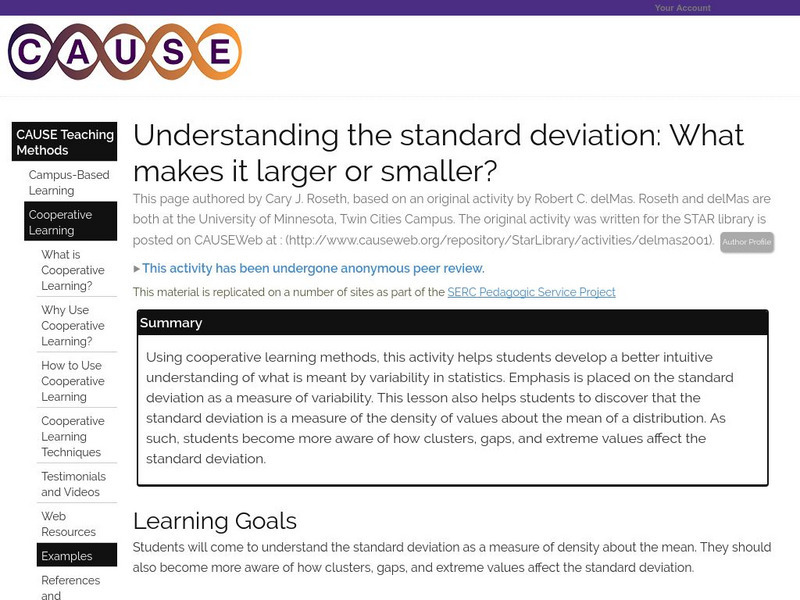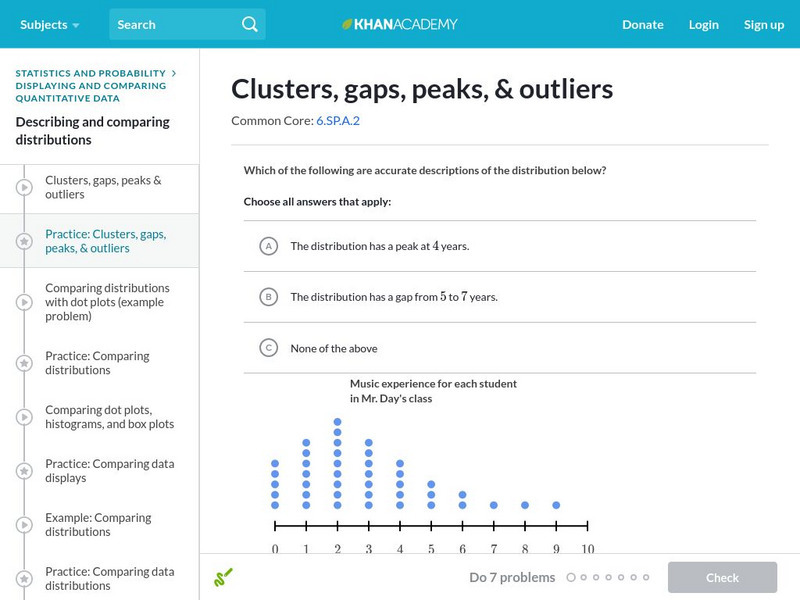ACT360 Media
Act Den: Sky Den
This journey will help you solve big questions about the universe. You will be able to see beyond human capabilities and will learn what scientists are discovering.
Cornell University
Cornell University: Counting Solution Clusters in Graph Coloring Problems
This paper proposes one of the first scalable methods for estimating the number of clusters of solutions of graph coloring problems using a belief propagation like algorithm.
TED Talks
Ted: Ted Ed: What We Can Learn From Galaxies Far, Far Away
By studying the properties of the universe's largest pieces we can learn quite a lot about our own world and galaxy. [6:43]
Science Education Resource Center at Carleton College
Serc: Understanding the Standard Deviation: What Makes It Larger or Smaller?
Students develop a better intuitive understanding of what is meant by variability in statistics. Emphasis is placed on the standard deviation as a measure of variability.
Khan Academy
Khan Academy: Clusters, Gaps, Peaks, and Outliers
In this exercise, students practice describing data distributions as clusters, gaps, peaks, and outliers. Students receive immediate feedback and have the opportunity to get hints and try questions repeatedly.
Other
Stem and Leaf Plotting
A nice explanation of a stem and leaf plot, accompanied by many helpful examples.
Other
Howto: Multi Disk System Tuning
This document describes how best to use multiple disks and partitions for a Linux system. Although some of this text is Linux specific the general approach outlined here can be applied to many other multi tasking operating systems.





